by Сурова Марія
24 Лютого 2025, 16:40
Three Years of Ecocide
For more than a decade, Ukraine has endured aggression that has brought countless challenges and suffering. Today, on the day marking the third anniversary of the full-scale invasion, we remember the tragic moment when the enemy unleashed a new level of cruelty against our independence. This day has become a symbol of the resilience and […]
For more than a decade, Ukraine has endured aggression that has brought countless challenges and suffering. Today, on the day marking the third anniversary of the full-scale invasion, we remember the tragic moment when the enemy unleashed a new level of cruelty against our independence. This day has become a symbol of the resilience and determination of our people, united in defense of their land, culture, and freedom.
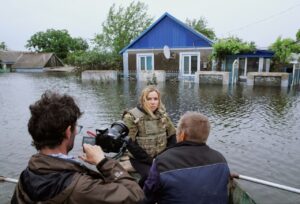 Iuliia Markhel, leader of Let’s do it Ukraine, stated:
Iuliia Markhel, leader of Let’s do it Ukraine, stated:
“The environment knows no borders. Every drop of pollution, every act of nature’s destruction resonates within us, our region, and all the inhabitants of the planet. Every citizen must stand up today to protect the environment and preserve the priceless resources of planet Zamelia. United, we have the power to stop this destruction and ensure a stable and safe future for the next generations.”
According to research as of 24 February 2025, the impact of the war on the environment is reaching staggering proportions.
Data from the State Agency for Forest Resources of Ukraine show that as of June 2024, the war directly affected 708.9 thousand hectares of forests, of which 893.9 hectares were completely destroyed. The estimated losses exceed 2.5 million hryvnias; however, these figures may change due to the inaccessibility of mined territories for precise assessment. The area of forest masses has decreased by 12% due to illegal logging and numerous forest fires, diminishing nature’s capacity to absorb carbon and regenerate greenery.
Soil analyses indicate that the concentration of heavy metals, such as lead and cadmium, has tripled, adversely affecting the fertility of agricultural lands.
Over 30% of the territory is covered by mine threats, significantly complicating restoration efforts and posing dangers to local communities.

The destruction of infrastructure and buildings has resulted in the generation of millions of tons of waste. In Ukrainian-controlled territories alone, over 700 thousand tons of construction waste have been recorded. On 6 June 2023, one of the largest technological disasters occurred – the collapse of the Kakhovka Hydroelectric Power Station dam. Following this event, on the northwestern shelf of the Black Sea, including 600 km² of flooded territories, pollutants entered the water, contaminating septic systems and other hazardous sources.
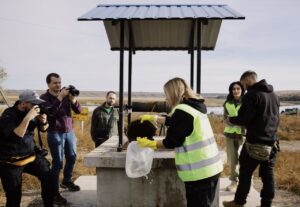
In Crimea, after an accident involving Russian tankers in the Kerch Strait, 719 tons of contaminated sand and soil were collected. In total, over 4 thousand tons of fuel oil entered the Black Sea, significantly impacting the ecosystem of this marine basin.
Pollution of the Seim and Desna rivers by Russia inflicted damage on the Ukrainian ecosystem amounting to 400 million hryvnias. In August, the Russians discharged organic waste into the water – a byproduct of processing at a sugar factory in Tyotkino in the Kursk region. The toxin quickly spread along the rivers of the Sumy and Chernihiv regions, causing a massive fish die-off.
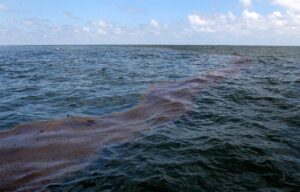
Furthermore, Russia carried out an attack on the Chornobyl Nuclear Power Plant, which posed a serious threat to regional safety and the environmental situation. The assault compromised the facility’s safety systems, increasing the risk of radiation leaks and potential emergency situations, thereby creating extremely hazardous conditions for both the environment and the population.
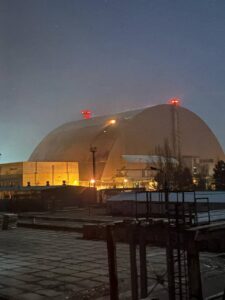
Every year in Ukraine, over 500 thousand tons of hazardous waste are generated. By 2024, intermediary companies controlled 84% of the waste management market, merely simulating proper recycling, while waste ended up in landfills or forest strips due to loopholes in current legislation.
During the full-scale invasion, according to official data, 94,370 thousand units of enemy military equipment were destroyed, resulting in the formation of 1,458,032 tons of waste and atmospheric emissions totaling 129,584 tons.
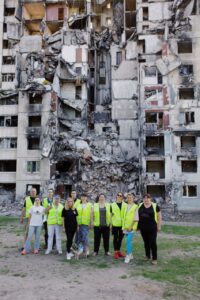
From the bottom of our hearts, we thank our volunteers and partners. Your unwavering dedication and tireless work have been a true support for our nation in its most challenging times. Every step in demining, cleaning polluted areas, and restoring infrastructure brings us closer to a bright future. You are a symbol of unity and strength, inspiring and helping us overcome any adversity.
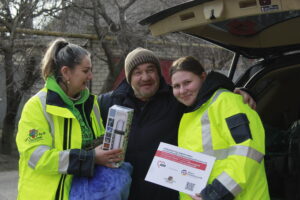
Our experience demonstrates that only through joint efforts can we not only halt the destruction of the environment but also lay the foundation for Ukraine’s restoration and prosperity. After victory, a new chapter awaits us, where reconstruction and development will be our collective endeavor. We invite everyone to join this work for a future filled with peace, stability, and harmony.
Learn more in the news on the website letsdoitukraine.org and on social media:
facebook.com/letsdoitukraineeco / instagram.com/letsdoitukraine / TikTok @letsdoitukraine
Maria Surova – External Communications Coordinator, +380 68 722 66 78 press@letsdoitukraine.org

